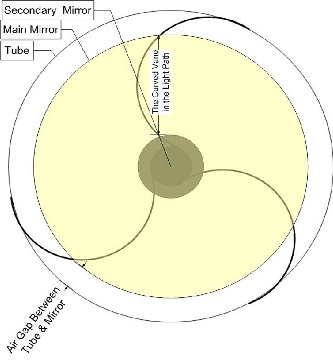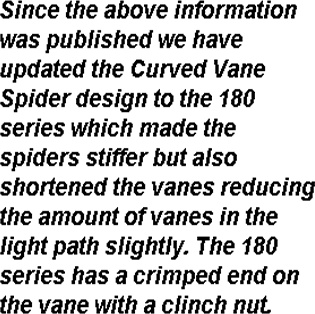HOW A CURVED VANE SPIDER WORKS
Still have Questions?
Please feel free to send us an email at
sales@1800destiny.com or give us a
call at 1800DESTINY
All spiders will cause some diffraction. In a normal, straight, four-vane spider, the
diffraction will form four distinct spikes emanating from any bright object. This is
really eight diffraction spikes not four. Each vane causes two spikes, perpendicular
to the vane: A curved-vane spider will spread the diffracted light throughout the field
of view, eliminating the spikes. For example, my 8 inch telescope with a standard 10
inch four vane spider, the spider absorbs just under 1 square inch of viewable light
path. That equals about 2 % of the total light path. My secondary mirror absorbs
about 2 square inches or 4 % of the light path. So the combination of spider and
secondary absorbs about 6% of my light path. When I converted to a large curved
vane spider, the spider absorbed 2.2 % of my light path, making the new total 6.2 %.
But, the little light that is diffracted by the spider is spread over the whole field of
view there by becoming invisible
1800DESTINY STORE















